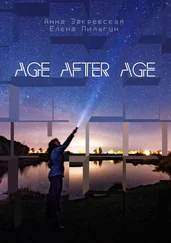“But the thing about Sadie’s mom,” Lil went on, though it seemed to Sadie that Tom Satville was not particularly interested in hearing about Sadie’s mother, of all people, “is that she’s brilliant . When she was young she looked like Joan Fontaine. Do you remember her? From Hitchcock? Vivian Leigh’s sister. And she’s still gorgeous now.”
“She is,” confirmed Tal. “She’s like something from a different era.”
“She is ,” Sadie clarified, “from a different era.”
“She doesn’t watch TV.”
“She watches a little,” said Sadie. “She loved St. Elsewhere .”
“And she was really into the first season of Survivor ,” said Tal.
“She was ?” cried Lil, a look of horror on her face.
“No,” Sadie assured her. “No.”
“Oh,” said Lil, turning to Tom. “Sadie had, like, a storybook childhood.” This was, of course, how Rose liked to characterize Sadie’s early years.
“Which means,” said Sadie, who had now resigned herself to playing the role Lil had chosen for her, “I had no friends. All the other kids thought I was weird.”
“Can you believe it?” Lil asked.
“I can’t,” said Tom Satville, shoving his hands in the pockets of his corduroy pants and rocking back on his heels.
“Oh, it’s true,” said Tal. “She was a major dork. I’ve seen the pictures.”
“I’m afraid so,” said Sadie. “My mother would throw birthday parties for me and invite my whole class. And the kids would come and bring these big, expensive presents and then whisper ‘You smell ’ as soon as my mother left the room.”
“Poor little rich girl,” said Tal, stroking her palm.
“You don’t know my pain,” said Sadie.
“Why did they hate you so much?” asked Tom Satville.
“I was weird,” said Sadie dispassionately. “I was fat. My mother dressed me like it was the fifties.” Her mother had also prohibited her from watching any television, except Sesame Street and Masterpiece Theatre and, moreover, striven to give Sadie a “women’s education” in the style of the class Rose had made her own—albeit one, as Tal had said, of a far-bygone era. Sadie took lessons in piano, painting, dance, gymnastics, tennis, skiing, singing, and golf. She rode in Central Park and skated at Wollman Rink. She learned to sew and knit and bake. She took Saturday classes at the Met, where she picked up the difference between a Manet and a Monet, and Sunday classes at the Museum of Natural History, where she studied dinosaur bones and the earliest forms of humanoid life. She learned to throw pots from a married pair of potters, with a kiln in the basement of their Ninetieth Street brownstone. With the city parks commissioner—a tan, wiry fellow, who lived around the corner and played squash with James Peregrine—she studied different sorts of trees and shrubs and plants and birds. At eight, she dissected a cow’s eyeball in an after-school biology tutorial, and drafted illustrated storybooks in the manner of Edward Gorey, with titles like “The Girl and the Monster” and “Penguin Have Sharp Teeth.” She refused to drink soda or eat sugared cereals or packaged cakes and went through a period of vegetarianism in her tenth year. She was an excellent student, but never the top student, which her mother took as a sign of success (“Sadie has interests outside of school”) and her teachers took as a sign of boredom, since she was always finishing her work ahead of the other students and withdrawing a thick book from the woody interior of her desk, or sketching complicated William Morris–like patterns on filmy sheets of onionskin with a set of calligraphic pens and colored inks. All of this, of course, was why she’d had no friends. She hated now to think of her childhood—at least the part lived at school, outside the safety and comfort of home.
“What does she do, your mother?” asked Tom Satville.
“She’s on a bunch of committees. Hadassah. The temple sisterhood. That kind of thing. She throws parties. Fund-raisers.” She smiled. “And she shops. That’s mainly what she does.”
“And she reads ,” corrected Lil. “She’s read everything. She reads like, ten books a week.”
Sadie smiled apologetically at Tom Satville. “I think it’s more like one or two.”
“She reads a lot ,” confirmed Tal.
“But she reads everything ,” Lil went on. “Books about string theory. William Gaddis. Donna Tartt. Mystery novels. Crazy stuff. John Grisham.”
“She loves John Grisham,” Sadie agreed. “And British mysteries. Cozies. Elizabeth George. Who’s not actually British.”
“And every magazine,” continued Lil.
“ Every magazine?” asked Tom Satville.
“A lot of magazines,” Sadie conceded with a shrug. “She has a lot of time on her hands.”
“Like what?” asked Tom Satville.
“ Harper’s , The Economist , The Nation , The New Republic ,” Sadie told him, ticking the names off on her fingers. “ The American Prospect , The Christian Science Monitor , Mother Jones , The Utne Reader , The Atlantic , though she won’t read their fiction. She hates short stories. Um. A bunch of Jewish magazines, like Hadassah and The Jewish Week . Commentary . Though she doesn’t agree at all with their politics. And she’s always complaining that they’re boring.”
“So she’s kind of a public intellectual?” Satville asked, sending Tal into a spasm of silent laughter.
“Um, not really,” Sadie told him. “She’s more of a completionist. She also reads Ladies’ Home Journal and Better Homes and Gardens and all that. She clips recipes for me.”
“There are more, Sades,” Lil insisted.
“Really?” asked Sadie. She was hungry and if she and Tal were going to go their separate ways this evening, if she wouldn’t see him until the following night, then she’d rather get their parting over with. “I suppose Time ,” she added. “And sometimes Newsweek . And, of course, the Times magazine. And she’s probably the only person who reads those local neighborhood magazines. Quest. East Side Spirit or whatever it’s called. And New York . She actually loves New York .”
“ The New Yorker ?” suggested Tom Satville.
“No. Not anymore. She canceled her subscription.”
“Really?” Tom Satville appeared shocked. “That seems odd .”
“She says it became just like People after Tina Brown took over. She’s really down on the rise of celebrity culture.”
“She should talk to Ed Slikowski!” cried Lil, so loudly that Sadie worried that Ed could hear her. “That’s his thing, too.” The four of them turned to look at Ed, who was still at the front of the loft, cornered by Caitlin Green-Gold. To his left, Sadie spotted Beth walking through the front door, trailed by Dave.
“Hey.” Sadie turned to Tal. “Where are they going?”
“Let’s go see,” he said, taking her hand. “We’ll be back,” he called to Lil and Tom Satville.
It’s time to leave , Sadie thought. She was bored and tired and hungry. Bean , Sadie thought, I’ll get Beth and we can go to Bean. The room, now, was filled with strangers—friends, perhaps, of the band? After several wrong turns, Sadie and Tal arrived at the front of the loft, its door propped open by a cement brick, where Dave and Beth sat on the front step. Dave jumped up as soon as he saw them. “You wanna head?” he asked Tal.
“Sure, if you’re ready,” said Tal, squeezing Sadie’s hand.
Читать дальше












